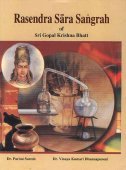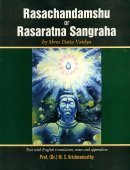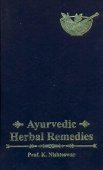Mukharoga, Mukharōga, Mukha-roga: 8 definitions
Introduction:
Mukharoga means something in Hinduism, Sanskrit, Buddhism, Pali, Marathi. If you want to know the exact meaning, history, etymology or English translation of this term then check out the descriptions on this page. Add your comment or reference to a book if you want to contribute to this summary article.
In Hinduism
Ayurveda (science of life)
Kalpa (Formulas, Drug prescriptions and other Medicinal preparations)
Source: Shodhganga: Edition translation and critical study of yogasarasamgrahaMukharoga (मुखरोग) refers to “diseases of mouth” and is one of the various diseases mentioned in the 15th-century Yogasārasaṅgraha (Yogasara-saṅgraha) by Vāsudeva: an unpublished Keralite work representing an Ayurvedic compendium of medicinal recipes. The Yogasārasaṃgraha [mentioning mukharoga] deals with entire recipes in the route of administration, and thus deals with the knowledge of pharmacy (bhaiṣajya-kalpanā) which is a branch of pharmacology (dravyaguṇa).

Āyurveda (आयुर्वेद, ayurveda) is a branch of Indian science dealing with medicine, herbalism, taxology, anatomy, surgery, alchemy and related topics. Traditional practice of Āyurveda in ancient India dates back to at least the first millenium BC. Literature is commonly written in Sanskrit using various poetic metres.
Jyotisha (astronomy and astrology)
Source: Wisdom Library: Brihat Samhita by VarahamihiraMukharoga (मुखरोग) (Cf. mukharuj) refers to “facial disease”, according to the Bṛhatsaṃhitā (chapter 5), an encyclopedic Sanskrit work written by Varāhamihira mainly focusing on the science of ancient Indian astronomy astronomy (Jyotiṣa).—Accordingly, “If the lunar eclipse should terminate at the south-eastern point of the disc, the termination is technically known as dakṣiṇa-hanu (right jaw): crops will perish; facial disease [i.e., mukharuj] will afflict mankind; princes will suffer; and there will be good rain. If the lunar eclipse should terminate at the north-eastern point of the disc, the termination is known as vāma-hanu (left jaw): the king’s son will be afflicted with fears; there will be facial disease [i.e., mukharoga] and wars, but prosperity over the whole land”

Jyotisha (ज्योतिष, jyotiṣa or jyotish) refers to ‘astronomy’ or “Vedic astrology” and represents the fifth of the six Vedangas (additional sciences to be studied along with the Vedas). Jyotisha concerns itself with the study and prediction of the movements of celestial bodies, in order to calculate the auspicious time for rituals and ceremonies.
Languages of India and abroad
Marathi-English dictionary
Source: DDSA: The Molesworth Marathi and English Dictionarymukharōga (मुखरोग).—m (S) Aphthæ, or any disorder of the mouth. 2 Any disorder of the face. Pr. āmbyāṃlā ālā pāḍa kāvaḷyāṃlā ālā mukharōga.
Marathi is an Indo-European language having over 70 million native speakers people in (predominantly) Maharashtra India. Marathi, like many other Indo-Aryan languages, evolved from early forms of Prakrit, which itself is a subset of Sanskrit, one of the most ancient languages of the world.
Sanskrit dictionary
Source: DDSA: The practical Sanskrit-English dictionaryMukharoga (मुखरोग).—a disease of the mouth or face.
Derivable forms: mukharogaḥ (मुखरोगः).
Mukharoga is a Sanskrit compound consisting of the terms mukha and roga (रोग).
Source: Cologne Digital Sanskrit Dictionaries: Monier-Williams Sanskrit-English DictionaryMukharoga (मुखरोग):—[=mukha-roga] [from mukha] m. = -ruj (q.v.), [Suśruta; Varāha-mihira’s Bṛhat-saṃhitā; Mārkaṇḍeya-purāṇa]
[Sanskrit to German]
Sanskrit, also spelled संस्कृतम् (saṃskṛtam), is an ancient language of India commonly seen as the grandmother of the Indo-European language family (even English!). Closely allied with Prakrit and Pali, Sanskrit is more exhaustive in both grammar and terms and has the most extensive collection of literature in the world, greatly surpassing its sister-languages Greek and Latin.
Kannada-English dictionary
Source: Alar: Kannada-English corpusMukharōga (ಮುಖರೋಗ):—[noun] any of the oral diseases.
Kannada is a Dravidian language (as opposed to the Indo-European language family) mainly spoken in the southwestern region of India.
See also (Relevant definitions)
Partial matches: Roga, Mukha, Roka.
Query error!
Full-text: Vadanaroga, Mukharuj, Roga.
Relevant text
Search found 15 books and stories containing Mukharoga, Mukharōga, Mukha-roga, Mukha-rōga, Mukha rogas, Mukharogas; (plurals include: Mukharogas, Mukharōgas, rogas, rōgas, Mukha rogases, Mukharogases). You can also click to the full overview containing English textual excerpts. Below are direct links for the most relevant articles:
World Journal of Pharmaceutical Research
Study on irimedadi taila and khadiradi vati for post-radiation issues. < [2023: Volume 12, December issue 21]
Review article - preventive dentistry in ayurveda < [2018: Volume 7, November issue 18]
A conceptual study of tundikeri in ayurvedic and modern point of view < [2023: Volume 12, August issue 13]
International Ayurvedic Medical Journal
A clinical study on the effect of pippalyadi churna pratisarana in the management of tundikeri w.s.r. to chronic tonsillitis < [2016, Issue XII December]
Concept of tundikeri in ayurveda with modern counterpart: a review < [2022, Issue 07 July]
Role of yashtimadhu choorna with madhu lepana in the management of mukhapaka < [2021, Issue 2, February]
Prevention and treatment of diseases of mouth by gandoosha and kavala < [Volume 13 (issue 3-4), Jan-Jun 1994]
An introduction to abhinava chintamani an ayurveda treatise from orissa < [Volume 10 (issue 1), Jul-Sep 1990]
Some important aspects of nadipariksha from basavarajiyam < [Volume 24 (issue 1), Jul-Sep 2004]
Comprehensive Study of Mukhapaka and its Modern Counterpart < [Volume 10, Suppl 3: May-June 2023]
Efficacy of Rasaushadhis in Shalakya Tantra < [Volume 10, Issue 5: September-October 2023]
Pathya-apathya and lifestyle effects on supraclavicular disorders < [Volume 7, Issue 3: May - June 2020]
Journal of Ayurveda and Holistic Medicine
An Ayurvedic approach of Sarvasar mukhroga w.s.r to sub-mucosa fibrosis < [Volume 11, issue 3 (2023)]
Effect of Jaloukavacharana and Yashtiamdhu Choorna (Glycyrrhiza Glabra) with Ghrita Pratisarana in Pittaj-Oshthaprakopa (Cheilitis Glandularis)- A Case Study < [Volume 11, issue 8 (2023)]
A Clinical Study on Haritakyadi Yoga in Tundikeri (Tonsillitis) in Children < [Volume 11, issue 6 (2023)]
AYU (Journal of Research in Ayurveda)
Clinical efficacy of “Bhadra Mustadi Paste” and “Nagaradi Kwatha Gandusha” in Shitada (Gingivitis) < [Volume 32 (2); 2011 (Apr-Jun)]
A pilot study on Ayurvedic management of oral submucous fibrosis < [Volume 36 (1); 2015 (Jan-Mar)]
A comprehensive outlook of Sannipata < [Volume 32 (2); 2011 (Apr-Jun)]
Related products


